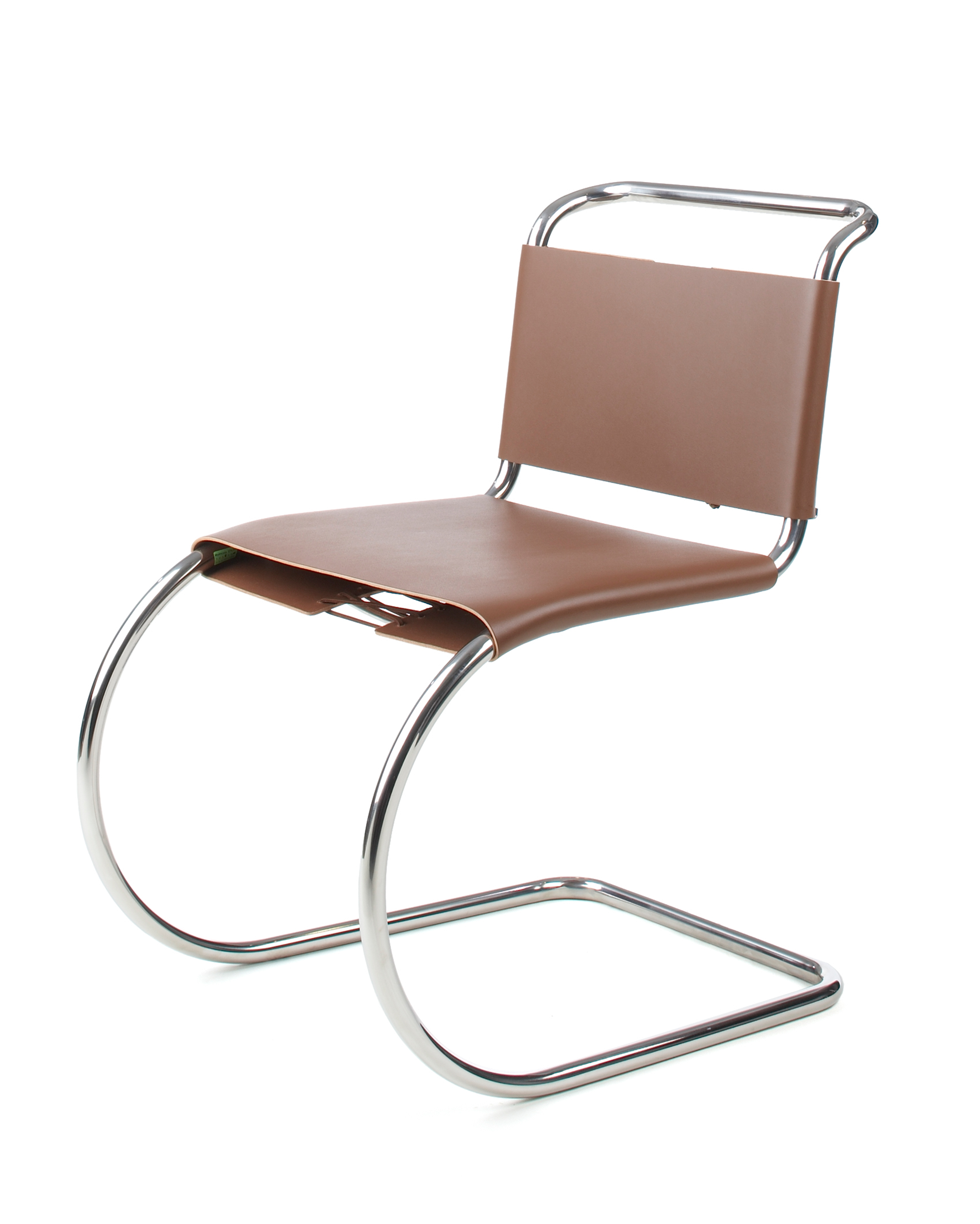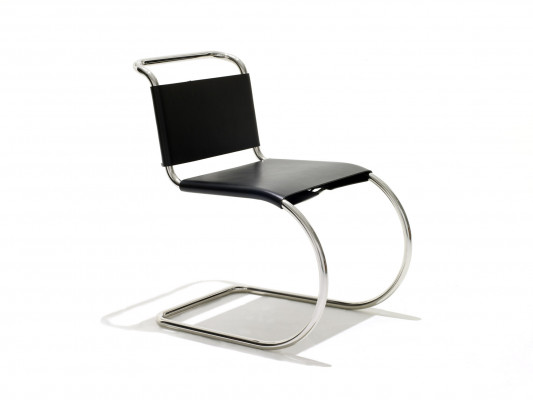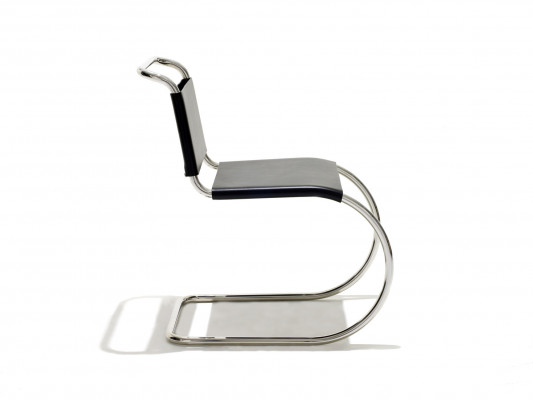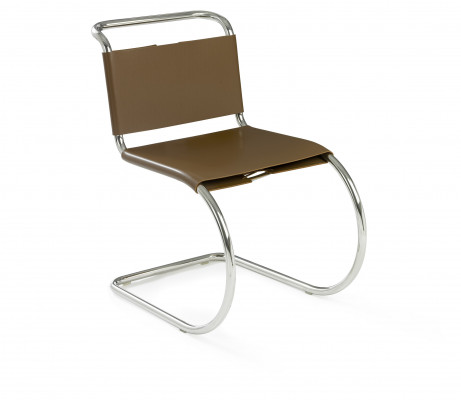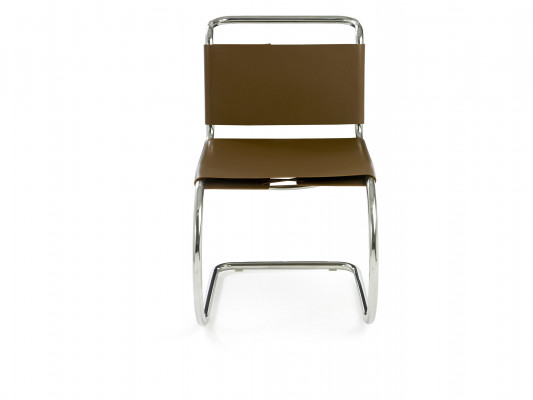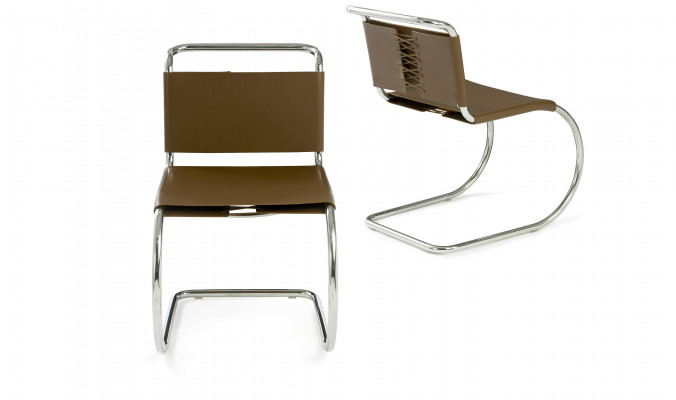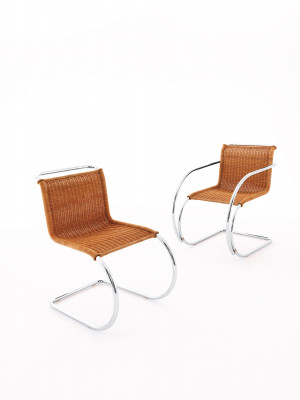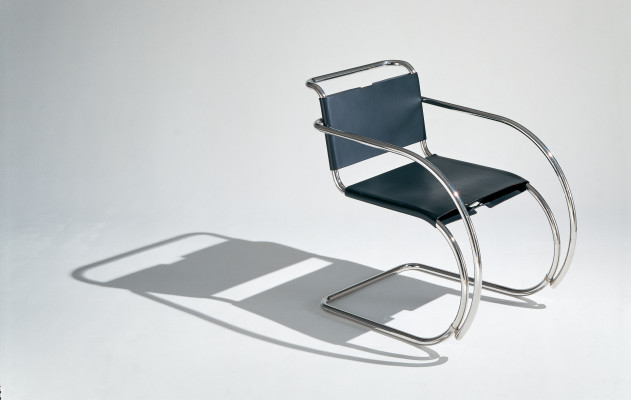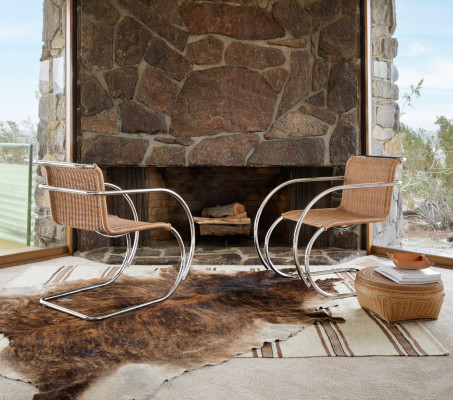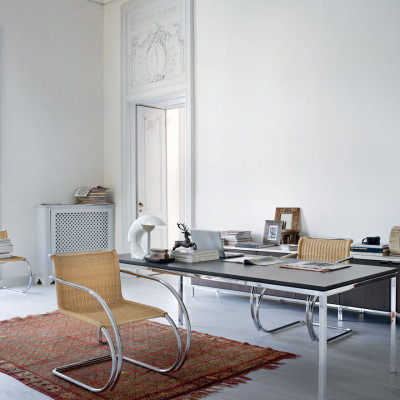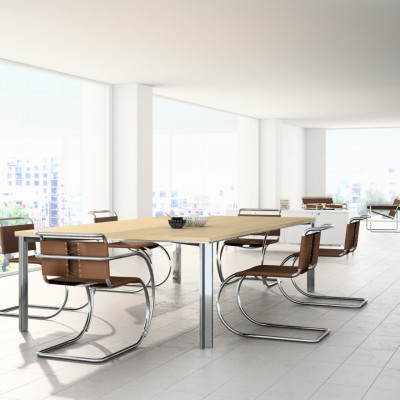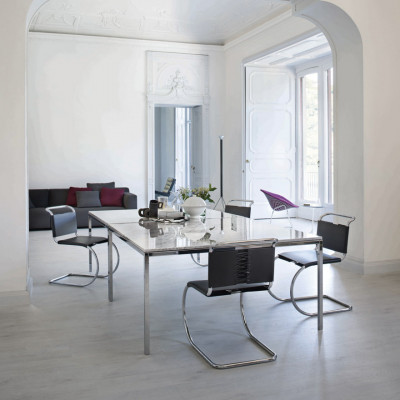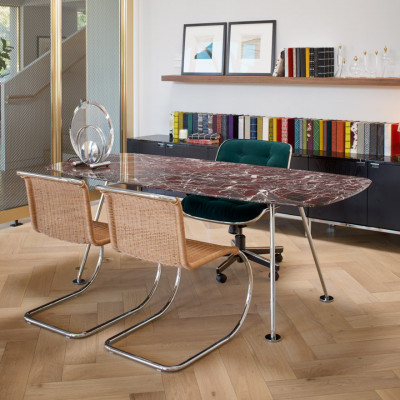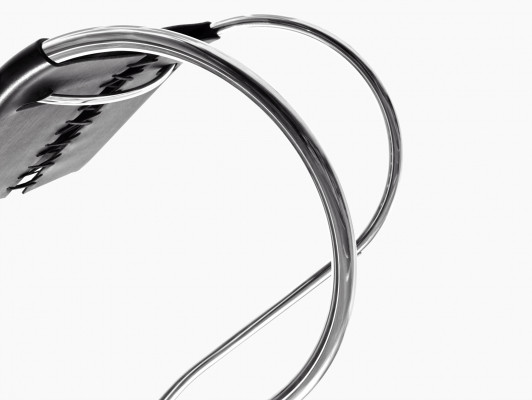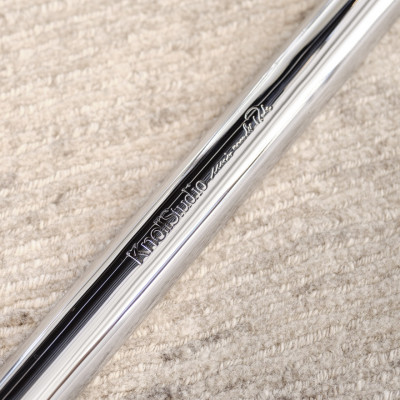Basic information
MR Side Chair Knoll
Designed by Ludwig Mies van der Rohe.
The origins of the bent-steel cantilevered chair are somewhat murky, but generally three names come up in the discussion. Marcel Breuer is widely credited with pioneering the exploration of the material, Mart Stam seems to be the first to conceive a “chair without back legs”, and Mies van der Rohe is remembered as the one who made it beautiful. The MR Collection represents some of the earliest steel furniture designs by Mies van der Rohe. The material choice was inspired by fellow Bauhaus master Marcel Breuer, while the forms are thought to be modern derivatives of 19th century iron rocking chairs.Tubular steel was the catalyst for the extensive experiments in cantilevered seating that resulted in Ludwig Mies van der Rohe's germinal MR Collection of 1927-29. Frame made of tubular polished chrome finish with a thick cowhide sling seat with leather laces. Available in three shades of cowhide: black, light brown and white-beige.


